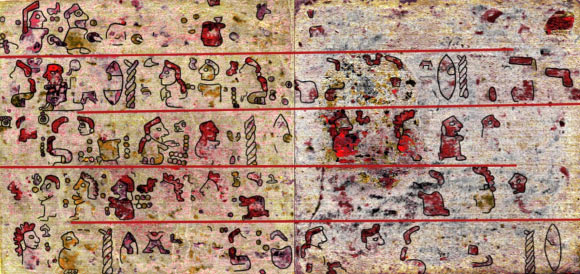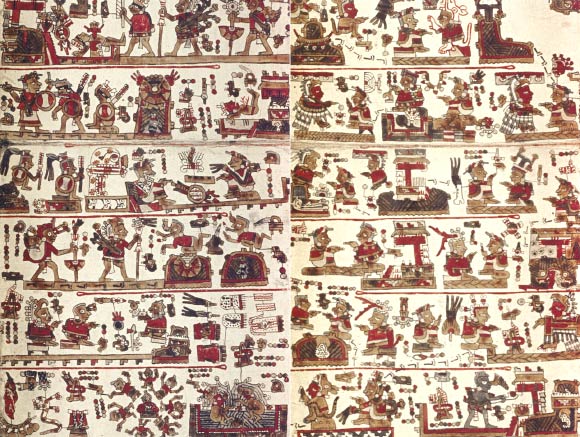An international team of scientists led by Leiden University researcher Ludo Snijders has used the so-called ‘hyperspectral imaging’ to uncover the details of a previously unknown Mexican book of Mixtec origin. The newly revealed pictographic scenes have been hidden from view for almost five centuries, concealed beneath a layer of plaster and chalk on the back of a later Mixtec manuscript known as the Codex Selden.
Less than 20 manuscripts are still in existence today that were made in the Americas before the conquest by the Europeans.
Of these, five codices come from the Mixtec area in the present-day Mexican state of Oaxaca. These books use a complex system of pictures, symbols and bright colors to narrate centuries of conquering dynasties and genealogies as well as wars and the history of ancient cities.
One of these five, Codex Selden, dates from around 1560 CE.
Also known as Codex Añute, the manuscript consists of a 16.4-feet (5 m) long strip composed of deer hide that has been covered with gesso, a white plaster made from gypsum and chalk, and folded in a concertina format into a 20-page document.
Researchers have long suspected that Codex Selden is a palimpsest, an older document that has been covered up and reused to make the manuscript that is currently visible.
The manuscript underwent a series of invasive tests in the 1950s when one page on the back was scraped, uncovering a vague image that hinted at the possibility that an earlier Mexican codex lay hidden beneath.
Until now, no other technique has been able to unveil the concealed narrative in a non-invasive way.
“After four or five years of trying different techniques, we’ve been able to reveal an abundance of images without damaging this extremely vulnerable item,” said Dr. Snijders, first author of a paper reporting the findings in the Journal of Archaeological Science: Reports.
“We can confirm that Codex Selden is indeed a palimpsest.”

Hyperspectral imaging revealed hidden images in the Codex Selden. Image credit: Ludo Snijders et al.
This is the first time an early Mexican codex has been proven to be a palimpsest.
“What’s interesting is that the text we’ve found doesn’t match that of other early Mixtec manuscripts,” Dr. Snijders said.
“The genealogy we see appears to be unique, which means it may prove invaluable for the interpretation of archaeological remains from southern Mexico.”
Some pages feature more than 20 characters sitting or standing in the same direction.
Similar scenes have been found on other Mixtec manuscripts, representing a King and his council. But the analysis of this particular text shows that the characters are both male and female, raising interesting questions about what the scene represents.
The imaging has also revealed a prominent individual who appears repeatedly on the document and is represented by a large glyph consisting of a twisted cord and a flint knife.
The name seems to resemble a character found in other Mexican codices: Codex Bodley and Codex Zouche-Nuttall. That character is an important ancestor of two lineages connected to the important archaeological sites of Zaachila and Teozacualco in Mexico. However, further analysis is needed to confirm that it is the same individual.
Dr. Snijders and co-authors analyzed seven pages of the codex for this study and revealed other images including people walking with sticks and spears, women with red hair or headdresses and place signs containing the glyphs for rivers.
The team is continuing to analyze the remainder of the document with the aim of reconstructing the entire hidden imagery, allowing the text to be interpreted more fully.
_____
Ludo Snijders et al. 2016. Using hyperspectral imaging to reveal a hidden precolonial Mesoamerican codex. Journal of Archaeological Science: Reports 9: 143-149; doi: 10.1016/j.jasrep.2016.07.019








